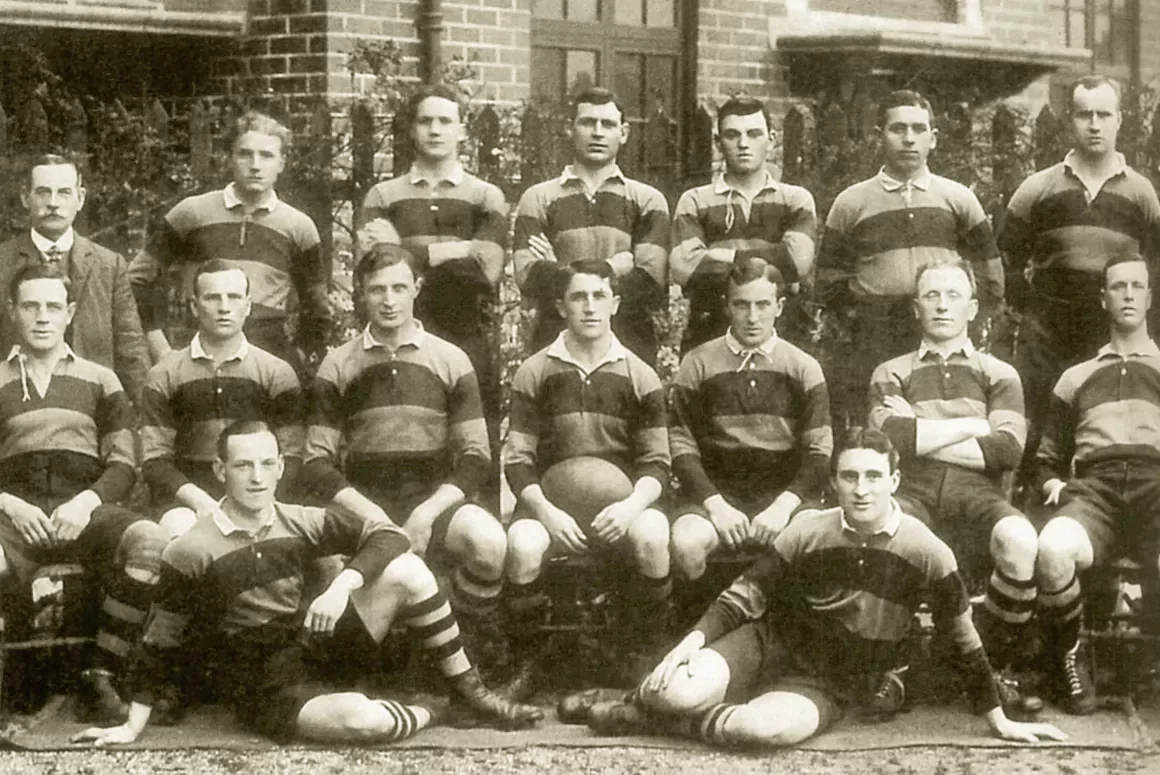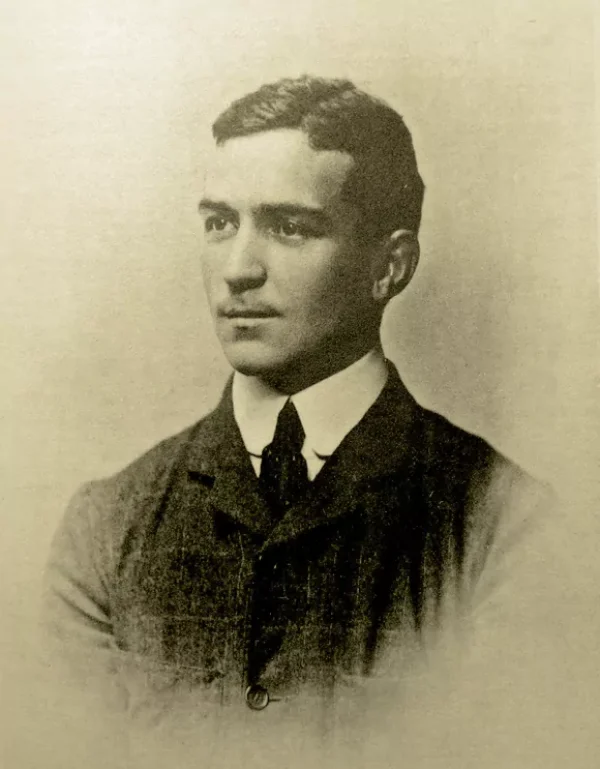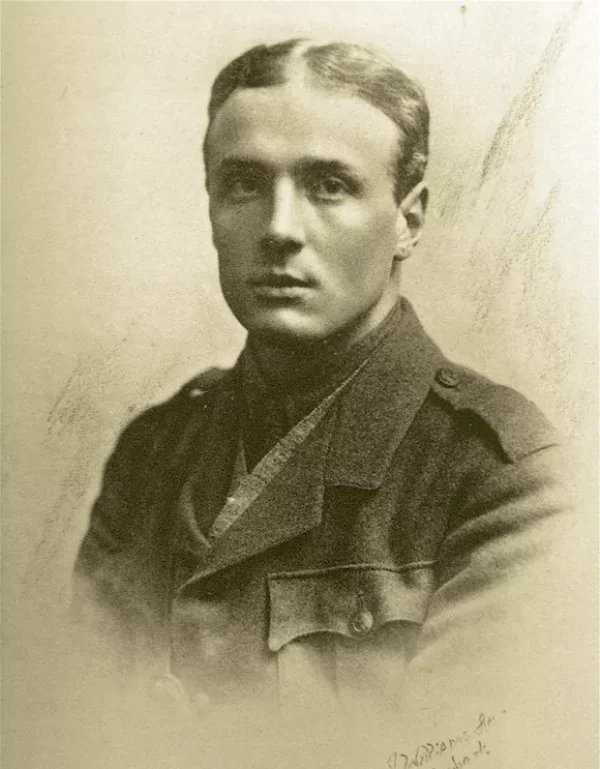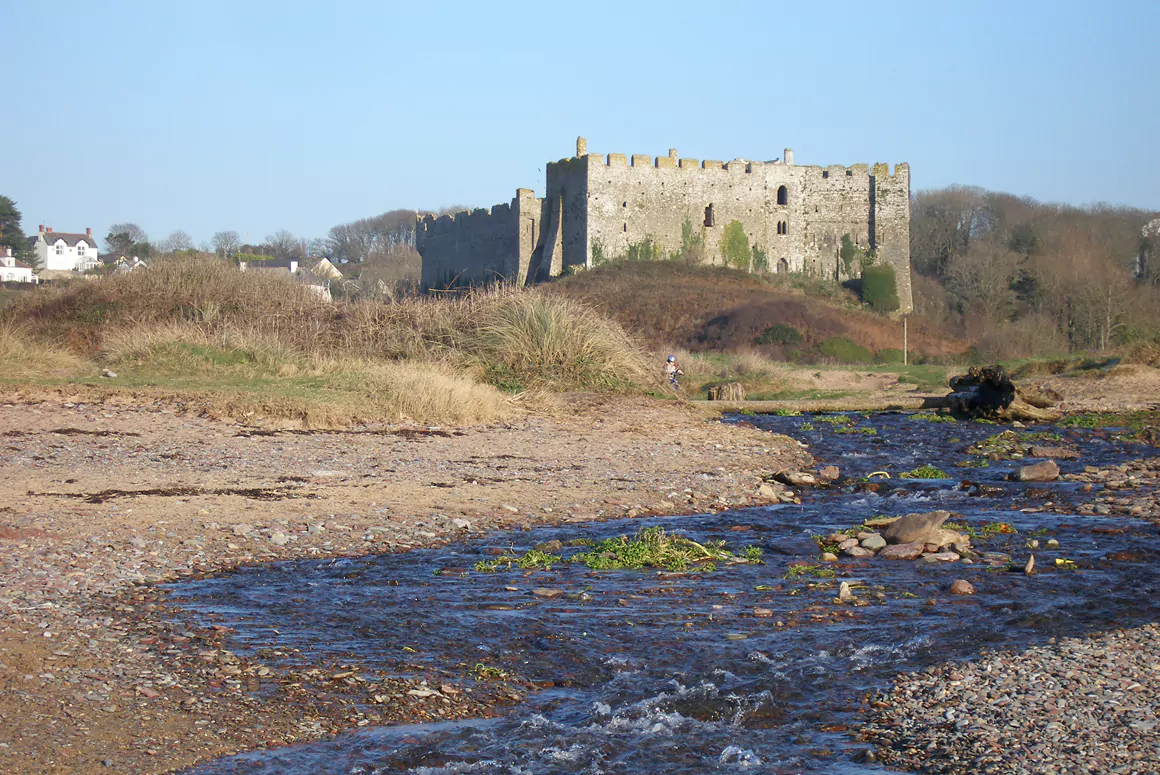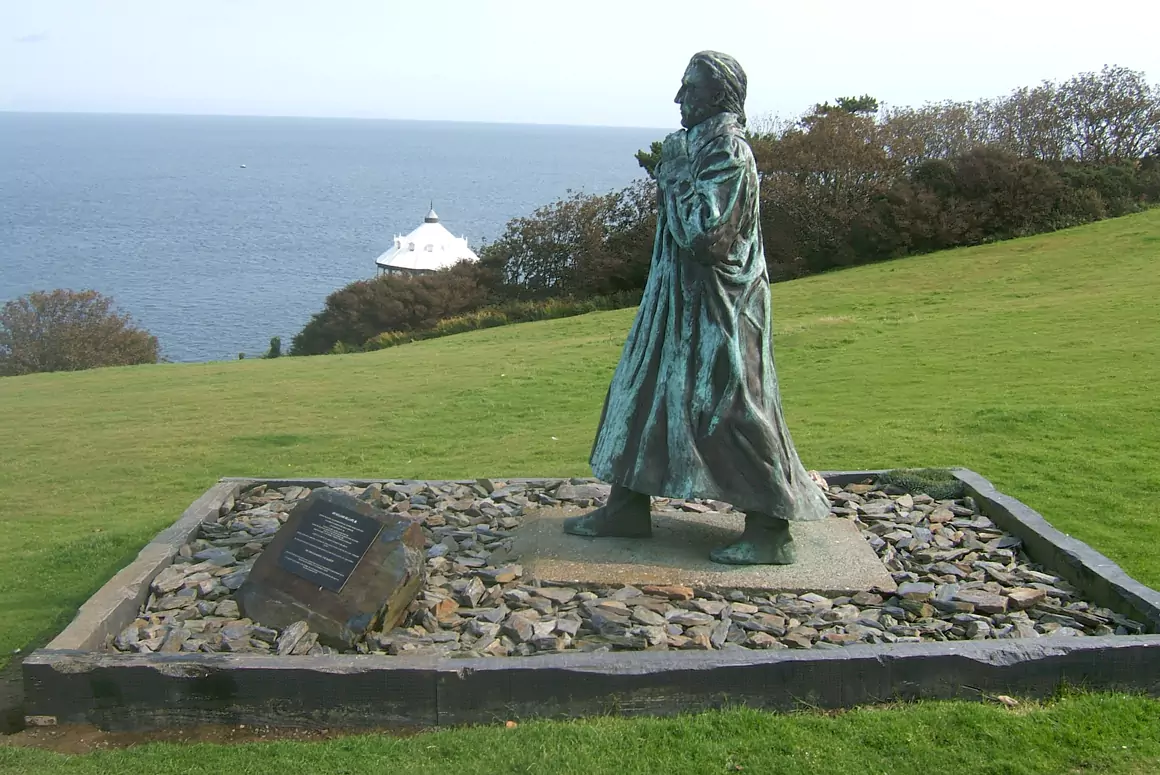![]()
The guns fell silent 100 years ago, at the eleventh hour, of the eleventh day, of the eleventh month (November 11th, 1918). Over four years and 1,500 days of attrition had finally led to Germany’s collapse and surrender, concluding ‘The Great War’, a conflict that left physical and emotional scars throughout the land.
When the war began, Britain’s professional army was augmented by eager volunteers who wanted to be a part of a just war that folk believed would be over by Christmas. As the death toll mounted, conscription was introduced, the whole nation mobilised for a total war that had to be won whatever the cost.
In Wales, support for the war effort was as strong as anywhere. Communities where Methodism and Rugby Union sat cheek by jowl as religious callings, swapped oval balls and prayer books for rifles and bayonets. Much will be written, as we mark a century since the end of WW1, about the men who went to war, but I was interested particularly in those rugby players, men whose next dash or body-swerve would be to dodge enemy bullets, rather than opposing wingers.
No fewer than 13 Welsh Rugby internationals were killed during the war, with another, Hopkin Maddocks, dying of his wounds, in 1921.
William Purdon ‘Billy’ Geen was born in Newport in March 1891 and was academically gifted, going to Oxford, where he represented the rugby club four times in the Varsity Match. A centre or wing, Geen played three times for Wales over 1912-13 and was a member of the Newport side that defeated the touring South Africans. He was also a decent cricketer, playing wicketkeeper for Monmouthshire.
When war broke out Geen was commissioned a 2nd Lt in the 9th Battalion, King’s Royal Rifle Corps (August 1914) and was on the Western Front the following May. On July 31st he was killed in action at 2nd Ypres when leading his men towards ruined village buildings, which necessitated walking into a blizzard of enemy fire, then engaging in hand-to-hand fighting. He was 24 and was one of the battalion’s 17 officers and 333 other ranks who fell in that attack.
Louis Augustus ‘Lou’ Phillips was also born in Newport, in February 1878 and went on to play half-back for Newport and win four caps for the national side. Like Geen, Phillips was an all-rounder, as he was also a talented golfer (twice the Welsh Amateur champion), and again was a gifted individual, becoming an architect. He first played for Wales against England in 1900, but his international career was all too short, as he had to retire after incurring a serious knee injury, which meant the match against Scotland the following year was his last.
- Louis Augustus ‘Lou’ Phillips
- William Purdon ‘Billy’ Geen
Lou Phillips enlisted with the 20th (Service) Battalion, Royal Fusiliers, when the war began, serving as a Sergeant, having turned down a commission. He was deployed to the Western Front in November 1915 and was engaged with a wiring party on the night of 14th March 1916 when he was shot dead near Cambrin, France. He was 38.
Col Richard Davies Garnons Williams was born in June 1856 in Llowes, a small village in Radnorshire, about three miles from Hay-on-Wye. Williams was the second child of a Reverend, who went to Cambridge in 1874, becoming an officer in the Army two years later, having completed officer-training at Sandhurst. Having played for Cambridge University and Newport, Williams had the honour of being selected for the very first Welsh Rugby international versus England in February 1881. Wales lost, and Williams never played for his country again.
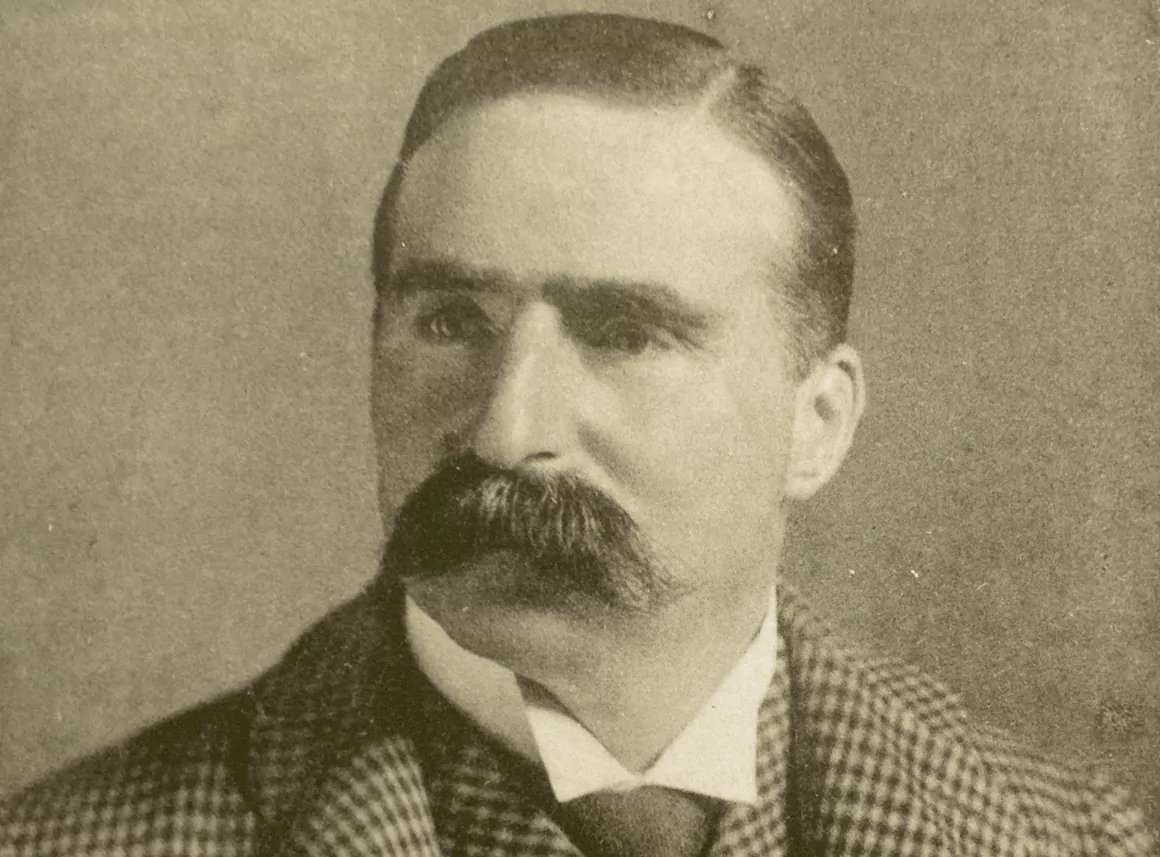
When WW1 began, Williams was already 58 and retired from military service, but the crisis of The Great War saw him re-join the Army, being posted back to his original regiment, the 12th (Service) Battalion, Royal Fusiliers. Williams was killed in September 1915 when leading his battalion at the Battle of Loos. Aged 59 when he died, Williams was the oldest of the 13 Welsh Rugby internationals who died. One of Williams’ men said they ‘could not have had a better, braver officer.’ The familial tragedy of WW1 was exemplified by Williams, who lost a brother, when HMS ‘Hampshire’ was torpedoed in June 1916, and a son-in-law, killed on the Western Front in 1917.
For the other rugby heroes, their date of death leads you to the place where they stoically met their end. Charles Taylor (January 1915) was aboard HMS ‘Tiger’ at the Battle of Dogger Bank when it was hit by shellfire from a German cruiser. Several perished at the Battle of the Somme (July-November 1916). Edward (‘Dick’) Thomas, Horace Thomas, David Watts and Johnny Williams all died here. Bryn Lewis was killed at Ypres. Fred Perrett must have been wounded very late in the war as he died of his wounds at a casualty clearing station about three weeks after the Armistice.
As we look back on WW1, 100 years after its conclusion, let’s remember not only the gallant rugby players who fought with the same passion and commitment they played, but also all the other men of the Principality who went away to fight.
Lest we forget.
The Welsh Rugby Heroes
Geen, Billy (3 caps, died July 1915, aged 24)
Lewis, Bryn (2 caps, died April 1917, aged 26)
Perrett, Fred (5 caps, died December 1918, aged 27)
Phillips, Lou (4 caps, died March 1916, aged 38)
Pritchard, Charlie (14 caps, died August 1916, aged 33)
Taylor, Charles Gerald. (9 caps, died January 1915, aged 51)
Thomas, Edward John Richard (4 caps, died July 1916, aged 32)
Thomas, Horace (2 caps, died September 1916, aged 26)
Waller, Phil (6 caps, died December 1917, aged 28)
Watts, David (4 caps, died July 1916, aged 30)
Westacott, Dai (1 cap, died August 1917, aged c35)
Williams, Johnnie Lewis (17 caps, died July 1916, aged 34)
Williams, Richard Garnons (1 cap, died September 1915, aged 59)
Maddock, Hopkin (6 caps, died from wounds 1921, aged c40)
Feature image: The Newport side that defeated the South Africans in 1912. Billy Geen is the left-most player in the back row (from WJ Townsend Collins, ‘Rugby Recollections. Newport’, 1948, RH Johns).
Words: Stephen Roberts
First published in Welsh Country Magazine, Nov-Dec 2018


